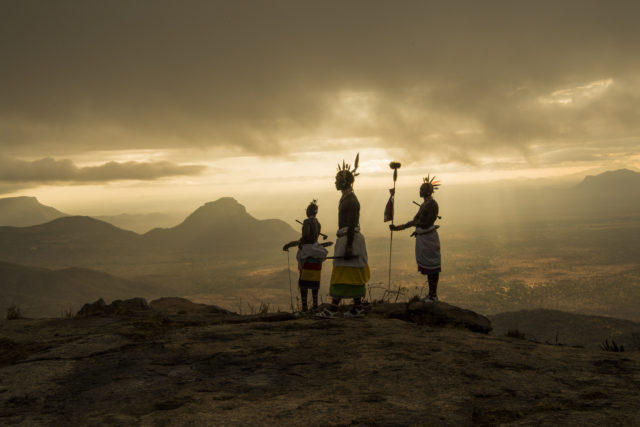These are just the first few minutes of the documentary on my work in Madagascar. It will be available in full length as an app in the Apple appstore in July 2011.
Over the Islands of Africa — Madagascar
The sounds of their names alone conjure up thoughts of pristine beaches, spices and the tales of a thousand and one nights. The five-part documentary series “Over the Islands of Africa” follows five internationally renowned photographers as they explore the islands around Africa — Zanzibar, Mauritius, Madagascar, São Tomé & Príncipe and Cape Verde.
The photographers stop at nothing in pursuit of spectacular perspectives for their aerial photographs, stories and portraits, making use of unusual means of transport, from a motorised parachute to a flying rubber boat that can land on land as well as water.
There are few women among the upper echelons of photographers. Ami Vitale is one of them. A frequent visitor to the world’s conflict zones, Ami looks for more than just beautiful motifs. She seeks out the story behind the picture. In Madagascar, she she wants to explore what it means to be Malagasy.
Ami begins her journey on the old pirate island of Nosy Bé in the northwest. Together with the French skipper Nicolas, she sails along the rugged coast to the realm of a king of the Sakalava culture. The daily lives of Malagasy are regulated by prohibitions and taboos that often remain invisible to strangers. Depending on which group one belongs to, it may be forbidden to touch a chameleon, talk about crocodiles or work on Thursdays.
Armed only with her camera and a few newly acquired phrases in the local language, she ventures into villages seldom visited by strangers. The women show Ami how to carry a bucket of water on her head, winnow grain and protect the beauty of one’s skin beneath the blazing African sun. At the Sakalava’s festival in honour of their ancestors, Ami meets the spirits of deceased villagers. She learns that chameleons are harbingers of misfortune and hears the blood-curdling nightly howls of the Lemurs. Ultimately she even gets a private audience with King Momad, one of the last kings of Madagascar.
In Diego, Ami meets the gem trader John. He leads her to sapphire mines, where fortune-hunters risk life and limb in search of the ultimate prize.
Pilot Yves takes Ami to the heart of the island, the Malagasy highlands, in his small propeller plane. The flight affords Ami the chance to take some breathtaking aerial photographs. In the capital of Antananarivo, the picture starts to take shape for Ami. She meets the musician Rajéry, who lets her in on one last secret — the sound of Madagascar, which goes straight to the heart.
Spirits, Kings, Lemurs — Madagascar treats Ami to a multitude of new impressions and spectacular pictures. Director Christian Schidlowski and his team accompanied her on her trip.
Documentary | 2011 | HD | 52 minutes
Directed by: Christian Schidlowski
Dramatization and editing direction: Verena Schönauer
Camera: Sascha Kellersohn
Music: Nils Kacirek
Production Manager: Carolin Neubauer
Line Producer: Markus Breimaier
Producer: Thomas Wartmann
Editor: Ulrike Becker, SWR


 I’m looking forward to teaching a multimedia workshop at the
I’m looking forward to teaching a multimedia workshop at the 
